Archive
25 June 2020
Researchers create a mechanically-tunable graphene quantum dot
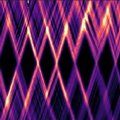
The ability to precisely manipulate individual charge carriers is a cornerstone for single-electron transistors and for electronic devices of the future, including solid-state quantum bits (qubits). Quantum dots (QDs) are at the heart of these devices. In a recent Nano Letters paper, researchers at Delft University of Technology (TU Delft) present the first mechanically-tunable monolayer graphene QD whose electronic properties can be modified by in-plane nanometer displacements.
25 June 2020
First detector array delivered to GUSTO mission
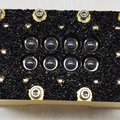
The first detector array for NASA's GUSTO mission has passed its pre-shipment review and is now shipping to the University of Arizona for integration into the balloon observatory. SRON together with TU Delft develops GUSTO's three 8-pixel-arrays, for the frequencies 4.7, 1.9 and 1.4 terahertz. They have now finished the array for the 4.7 terahertz channel—the most challenging part. GUSTO is a balloon mission that will measure emissions from cosmic material between stars.
19 June 2020
Spinoza Prize for Nynke Dekker

NWO has announced that TU Delft's Nynke Dekker has been awarded an NWO Spinoza Prize. The Spinoza and Stevin Prizes are the most prestigious awards in Dutch science. Besides Nynke Dekker, prizes were also awarded to prof. dr. ir. Jan van Hest (TUE), prof. dr. Pauline Kleingeld (RUG) and prof. dr. Sjaak Neefjes (LUMC/UL). Prof. dr. Linda Steg (RUG) en prof. dr. Ton Schumacher (AVL/LUMC/UL) have been awarded a Stevinprize. Each of the laureates will receive 2.5 million euros to spend on scientific research and related activities.
02 June 2020
TU Delft launches first eight TU Delft AI Labs

How can artificial intelligence (AI) accelerate scientific progress? Delft scientists will investigate this question in eight new 'TU Delft AI Labs'.
01 June 2020
Researchers develop method to probe phase transitions in 2D-materials
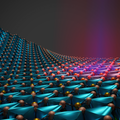
Phase transitions play an important role in materials. However, in two-dimensional materials, the most famous of which is graphene, phase transitions can be very difficult to study. Researchers from Delft University of Technology and the University of Valencia have developed a new method that helps to solve this problem. They suspended ultrathin layers of 2D-materials over a cavity and tracked the resonance frequency of the resulting membranes using lasers. The results of their work have been published in Nature Communications.
28 May 2020
Awards for three researchers of AS
25 May 2020
Researchers build sensor consisting of only 11 atoms
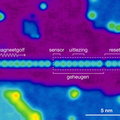
Researchers at Delft University of Technology have developed a sensor that is only 11 atoms in size. The sensor is capable of capturing magnetic waves and consists of an antenna, a readout capability, a reset button and a memory unit. The researchers hope to use their atomic sensor to learn more about the behaviour of magnetic waves, so that hopefully such waves can be used in green ICT applications one day.
16 May 2020
Expression of Concern about Quantized Majorana conductance publication
On April 29, Nature published the following statement regarding the 2018 article titled Quantized Majorana conductance: “The authors have alerted the editors of Nature to potential problems in the manner in which the raw data in this Letter have been processed, and these will have an impact on the conclusions that can be reliably drawn.”
14 May 2020
How copper can damage a cell
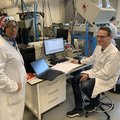
Copper is important for many processes in our body. Among other things, it supports the production of red blood cells, metabolism, and the formation of connective tissue and bones. Copper is also known to play a role in diseases such as cancer, diabetes and Alzheimer's disease. Unfortunately, we do not yet know exactly what that role entails. Researchers from Delft University of Technology and the Polish Academy of Sciences have now discovered a new piece of the puzzle. In order to be able to do its work, copper binds to different types of proteins in the cell. And although the complexes that are formed in this process are not harmful in themselves, temporary 'intermediate forms' appear to arise during the binding, which can lead to damage to the cell. The results of the research have been published in Angewandte Chemie.
13 May 2020
Making yeast dizzy to learn more about our own traits

What can yeast teach us about ourselves? Quite a lot, says Werner Daalman, a PhD-candidate in the group of Liedewij Laan who is defending his thesis on Wednesday 13 May. Daalman has studied how baker’s yeast decides in which direction to grow. It turns out that random differences in the quantity of the proteins involved in cell growth play a key role in this process. Such random variations in protein quantity are likely to be an important factor in other cellular processes as well. Not only in yeast, but also in human cells.